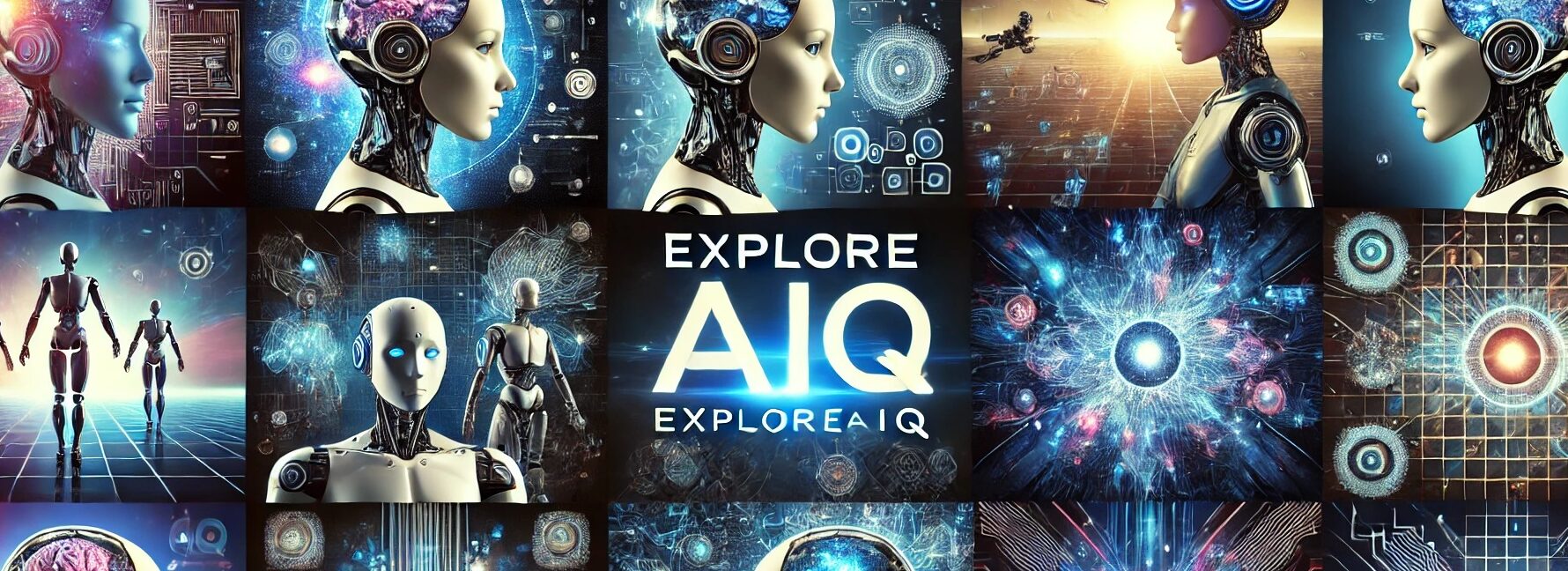Redefining Work and Life
Introduction: Bridging Human and Machine Intelligence
As Artificial Intelligence (AI) continues to advance, it’s not about machines replacing humans—it’s about collaboration. AI is becoming a tool to augment human capabilities, solve complex problems, and create new opportunities. This partnership between human intelligence and machine learning is reshaping industries, workflows, and daily life.
In this installment of the AI Terminologies Series, we’ll explore how AI is enabling smarter collaboration with humans, redefining the way we work, learn, and interact.
1. Enhancing Productivity at Work
AI’s Role:
AI is transforming workplaces by automating repetitive tasks and optimizing workflows, allowing employees to focus on creativity and strategy.
Applications:
- Automated Reporting: AI generates real-time reports and insights.
- Task Management: AI-powered tools prioritize and allocate tasks based on deadlines and importance.
- Virtual Assistants: Scheduling meetings, managing emails, and providing reminders.
Example:
Tools like Microsoft Copilot and Slack’s AI-powered features streamline workplace communication and task management.
2. Personalized Learning and Skill Development
AI’s Role:
AI tailors educational content to individual learners, making education more engaging and effective.
Applications:
- Personalized Courses: AI creates learning paths based on individual progress.
- AI Tutors: Virtual assistants provide instant feedback and support.
- Skill Gap Analysis: AI identifies areas for improvement and suggests relevant resources.
Example:
Coursera’s AI-driven recommendation engine helps learners find courses that match their career goals and interests.
3. Empowering Creativity with AI
AI’s Role:
AI is a powerful co-creator, helping individuals and teams generate new ideas, designs, and solutions.
Applications:
- Design: AI tools assist in creating graphics, animations, and layouts.
- Content Creation: AI generates text, music, and visual art.
- Brainstorming: AI tools like ChatGPT provide inspiration and ideation support.
Example:
Canva’s AI features allow users to quickly create professional-quality visuals, even without design experience.
4. Improving Decision-Making
AI’s Role:
AI enhances decision-making by analyzing large datasets, identifying patterns, and offering actionable insights.
Applications:
- Data Analysis: AI processes complex data to uncover trends.
- Predictive Modeling: AI forecasts outcomes to guide business strategies.
- Real-Time Recommendations: AI suggests the best course of action based on current data.
Example:
Retailers use AI to predict demand and adjust inventory, reducing costs and improving customer satisfaction.
5. Human-AI Interaction in Healthcare
AI’s Role:
AI augments healthcare professionals by providing diagnostic support, patient monitoring, and treatment planning.
Applications:
- AI-Assisted Diagnostics: Analyzing medical images for faster and more accurate diagnoses.
- Telehealth Platforms: AI chatbots triage patients and offer initial consultations.
- Treatment Recommendations: AI suggests personalized treatment plans based on patient data.
Example:
IBM Watson Health collaborates with doctors to analyze medical data and recommend optimal treatment options.
6. AI in Customer Experience
AI’s Role:
AI helps businesses deliver personalized and efficient customer experiences.
Applications:
- Chatbots: AI handles customer queries 24/7.
- Recommendation Engines: AI suggests products and services based on customer behavior.
- Sentiment Analysis: AI analyzes feedback to improve service quality.
Example:
E-commerce platforms like Amazon use AI to recommend products tailored to individual preferences.
7. AI as a Partner in Complex Problem-Solving
AI’s Role:
AI collaborates with humans to tackle large-scale challenges, from climate change to urban planning.
Applications:
- Simulation Models: AI runs simulations to evaluate potential solutions.
- Resource Optimization: AI identifies the most efficient use of resources.
- Collaborative Research: AI accelerates discoveries in fields like science and medicine.
Example:
AI-assisted urban planning tools help cities optimize traffic flow and reduce pollution.
8. Challenges in Human-AI Collaboration
While AI offers significant benefits, effective collaboration requires addressing key challenges:
- Trust:
- Ensuring AI decisions are explainable and transparent.
- Skill Gaps:
- Training workers to effectively use AI tools.
- Over-Reliance:
- Balancing AI assistance with human oversight to avoid errors.
- Ethical Concerns:
- Addressing biases and ensuring fair outcomes in AI-driven decisions.
Future of Human-AI Collaboration
- Smarter Tools:
- AI systems will continue to integrate seamlessly into everyday workflows.
- Collaborative Robots (Cobots):
- Robots designed to work alongside humans in manufacturing, healthcare, and more.
- Democratized AI:
- No-code platforms and user-friendly tools will make AI accessible to all.
- Ethical Partnerships:
- Stronger frameworks will ensure that human-AI collaboration aligns with societal values.
How to Embrace Human-AI Collaboration
- Learn to Work with AI:
- Familiarize yourself with AI tools relevant to your field.
- Develop Critical Thinking Skills:
- Combine AI insights with human judgment to make balanced decisions.
- Advocate for Ethical AI:
- Promote responsible AI development and usage in your organization or community.
- Stay Curious:
- Continuously explore new AI applications and how they can improve your work or life.
Conclusion: A Partnership for the Future
The future of AI is not about competition but collaboration. By leveraging AI as a tool to enhance human creativity, productivity, and decision-making, we can unlock new possibilities and achieve greater success.
Stay tuned to Explore AIQ for more insights, tutorials, and stories as we continue to explore the limitless potential of AI and human collaboration.




